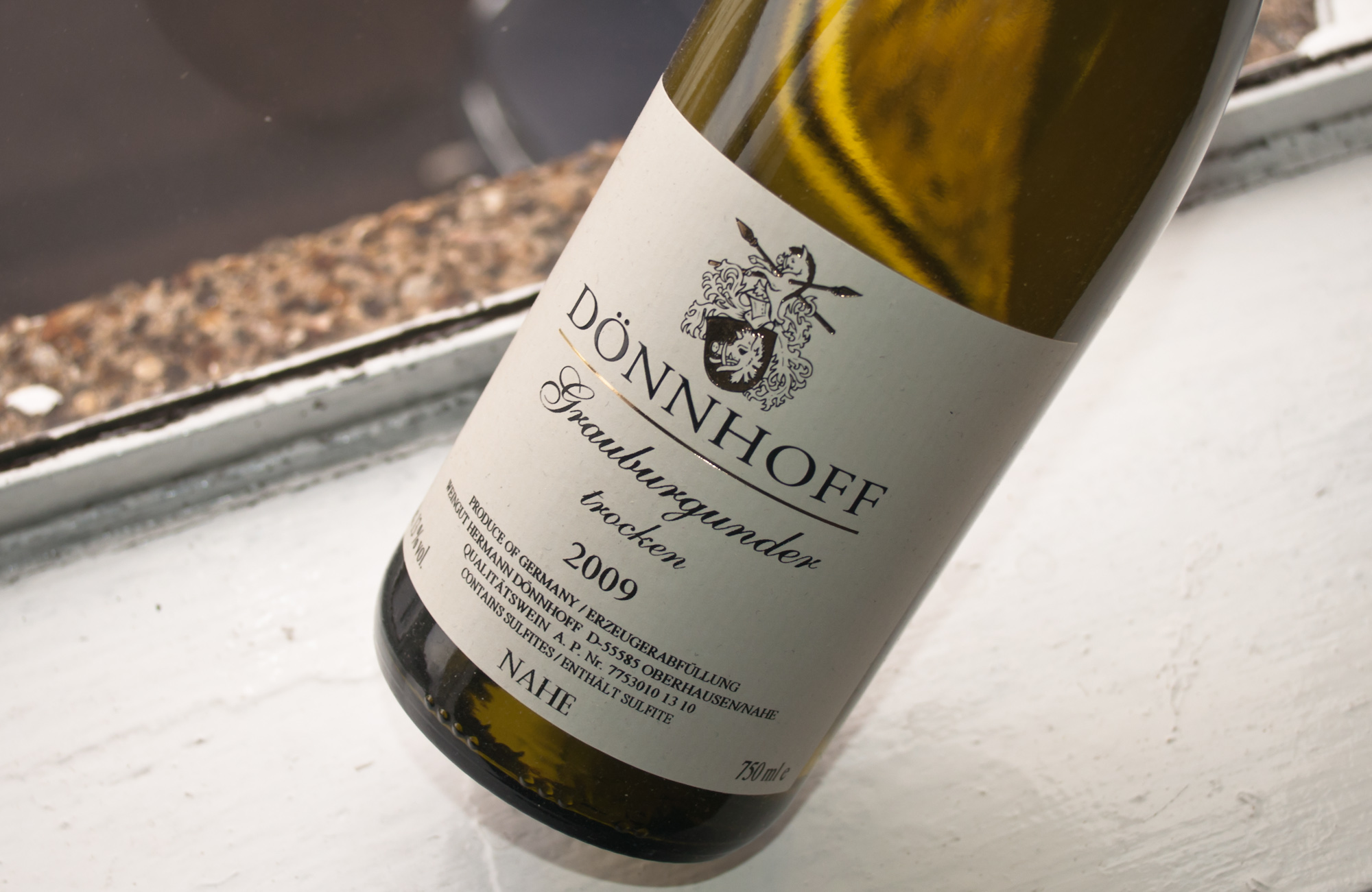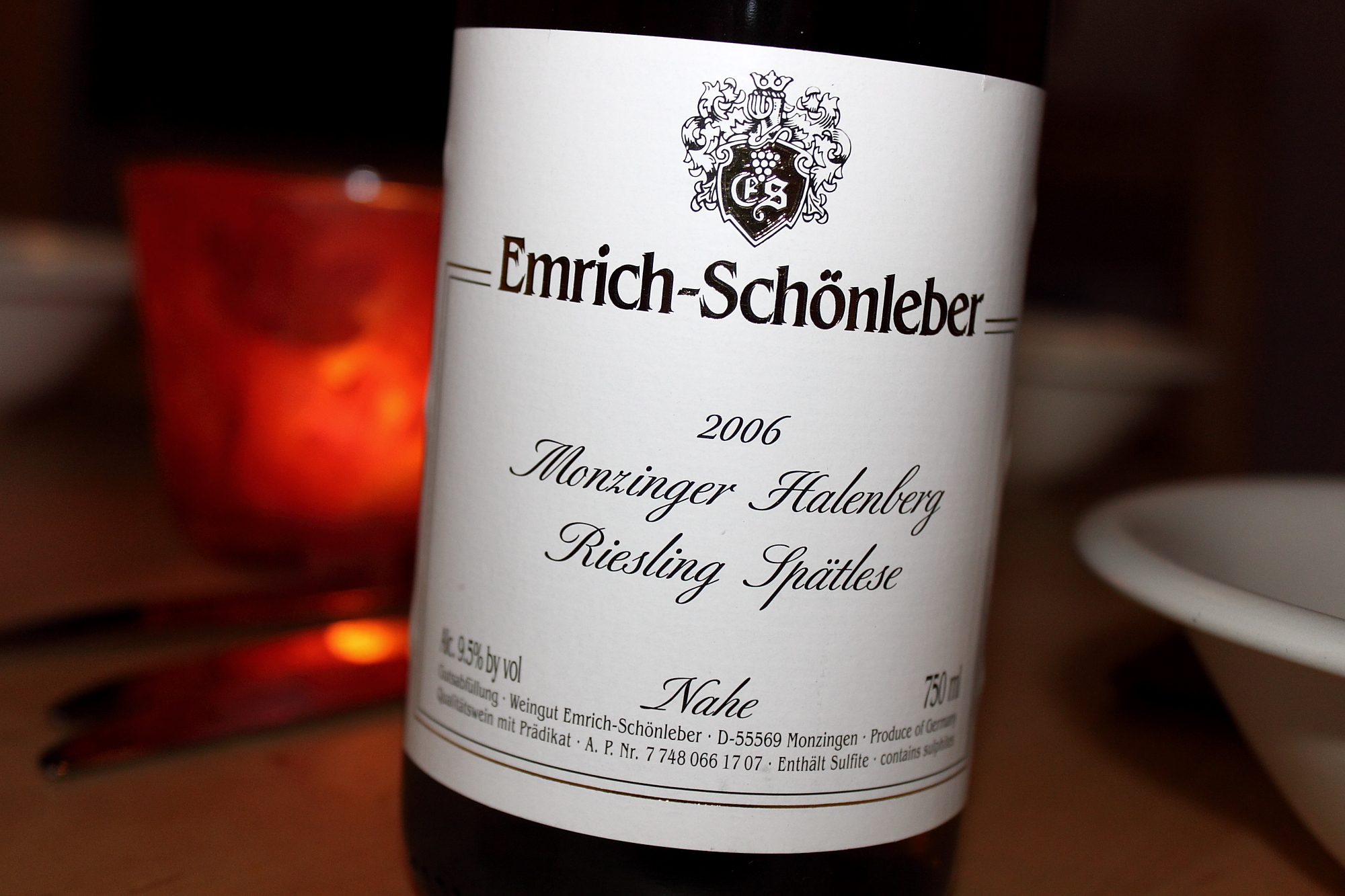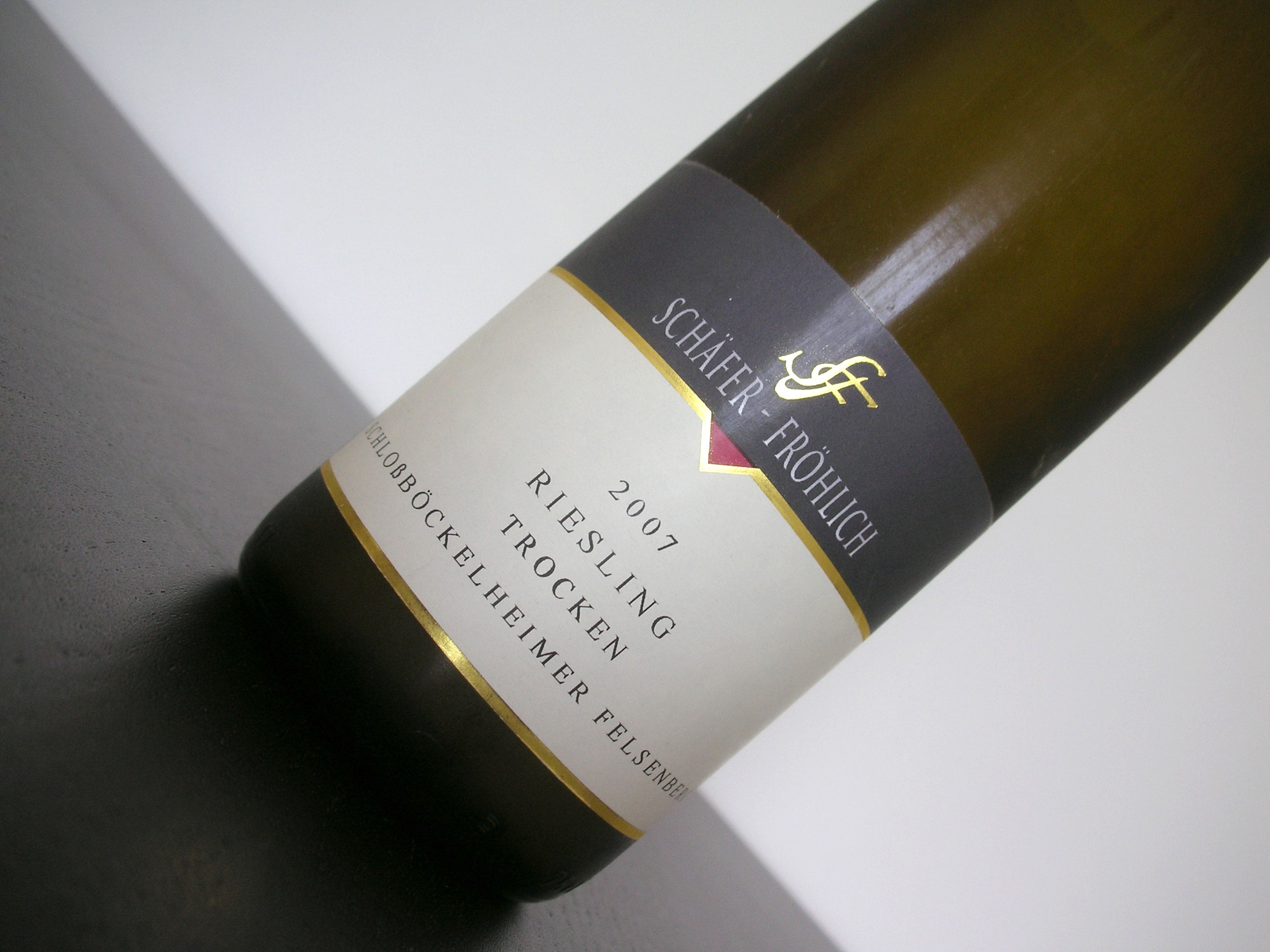Dönnhoff, Grauburgunder trocken, 2009
Helmut Dönnhoff is among the most accomplished German winemakers. The same wine merchants who complain about wine critic Robert Parker's bad influence on consumers will happily tell you that "their" Dönnhoff wines have received Parker's prestigious 100 point scores, while others will point to Dönnhoff putting the German region Nahe on the world wine map or rave over the Dönnhoff trademark elegance.

Dönnhoff has also been crowned as Riesling king for his fantastic dry and sweet Rieslings. Today we will have none of that superlative nonsense and instead take a look at Dönnhoff's basic Pinot Gris.




